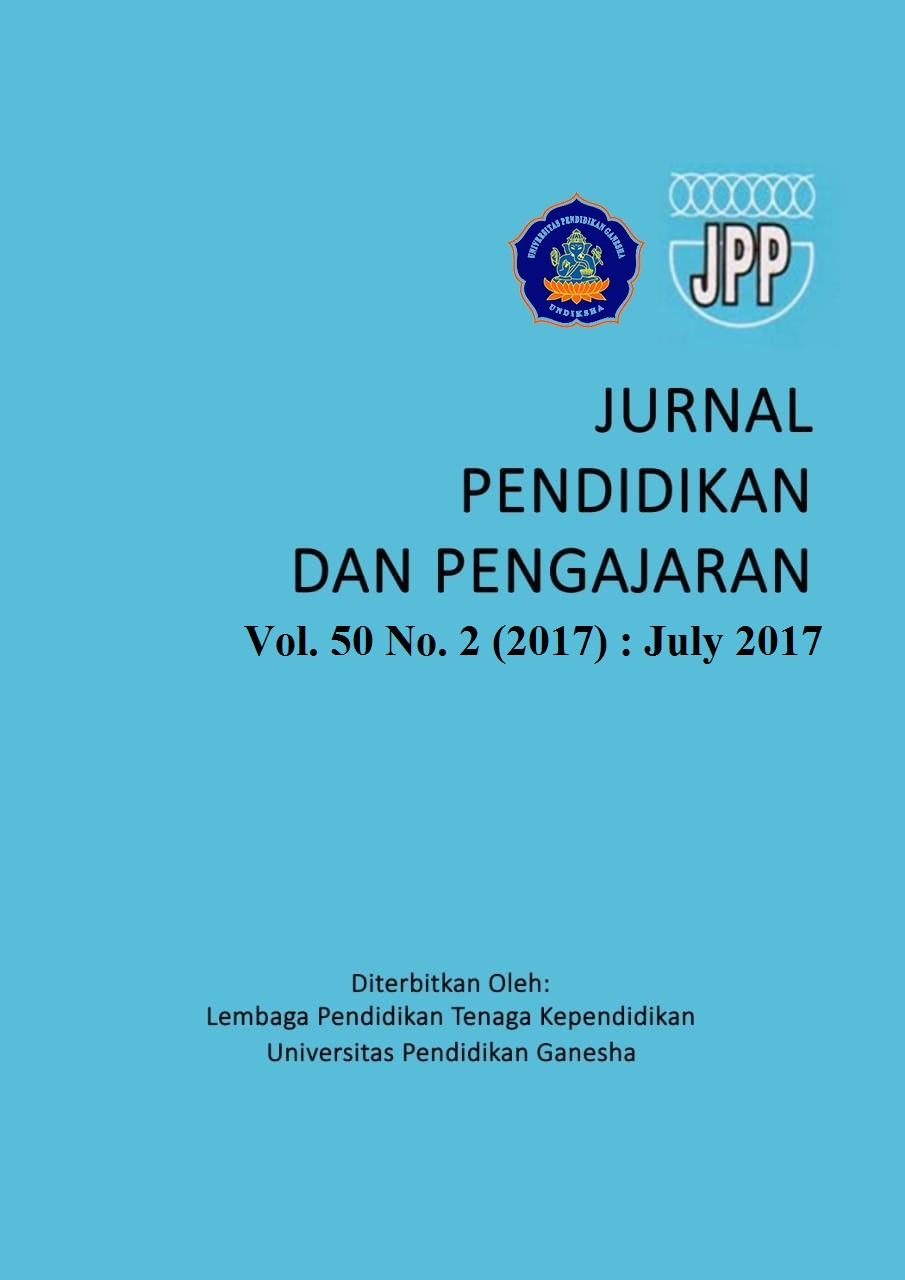IMPROVING THE QUALITY OF LEARNING MATHEMATICS THROUGH INNOVATIVE LEARNING MEDIA
DOI:
https://doi.org/10.23887/jpp.v50i2.11658Keywords:
Quality Learning, Mathematics, Learning And Innovative MediaAbstract
As a hope for an educator so that children can become children of his protégé. An educator is the most important part of which is inseparable from the process of learning. The results of the learning process depend very much on the role of teacher, teacher/educator designing, executing and evaluating. In order to make the learning process can be run with a maximum of and in accordance with the goal of educators so teachers can use the learning tool, in this case, is the medium of instruction. Lots of media types there are learning at school, of which simple or complicated. But many teachers who are encountering less innovative and creative in terms of learning media, and produced illustrations for designing learning media is very important and necessary by the teacher since by doing development as well as innovate can improve student learning and desire a great fit with the needs of the students. Therefore researchers interested and doing research on quality improvement of learning with innovative learning media. This research aims to develop the creative power of teachers to continue to create media innovative and creative learning.References
Arsyad and Asfah Loveland, Azhar. 1997. The Learning Media. Jakarta: Raja Grafindo Persada.
Rahman, Yoto and Saiful. 2001. Learning Management. Poor: Yanizar Group.
Solihatin and Raharjo, Etin. 2007. Cooperative Learning Instructional Model analysis of IPS. Jakarta: Aksara Earth.
Sudjana, Nana. 1989. The basics of teaching and learning. Bandung: Some New Light Algensindo.
Sugiono. 2007. Understand Qualitative Research. Bandung: Alphabeta.
Tanzeh, Ahmad. 2009. Introduction to research methods. Yogyakarta: Terrace.
Downloads
Published
How to Cite
Issue
Section
License
Authors who publish with Jurnal Pendidikan dan Pengajaran agree to the following terms:- Authors retain copyright and grant the journal the right of first publication with the work simultaneously licensed under a Creative Commons Attribution License (CC BY-SA 4.0) that allows others to share the work with an acknowledgment of the work's authorship and initial publication in this journal
- Authors are able to enter into separate, additional contractual arrangements for the non-exclusive distribution of the journal's published version of the work (e.g., post it to an institutional repository or publish it in a book), with an acknowledgment of its initial publication in this journal.
- Authors are permitted and encouraged to post their work online (e.g., in institutional repositories or on their website) prior to and during the submission process, as it can lead to productive exchanges, as well as earlier and greater citation of published work. (See The Effect of Open Access)





